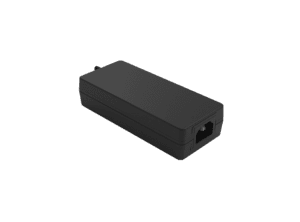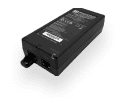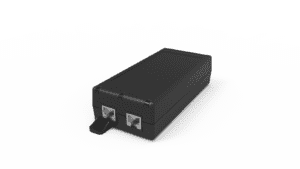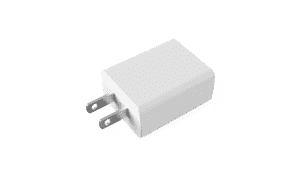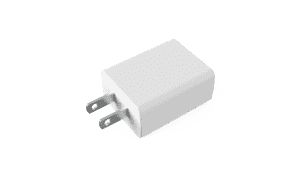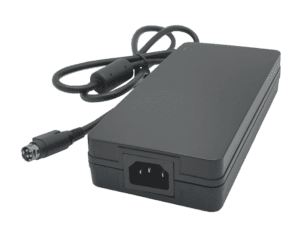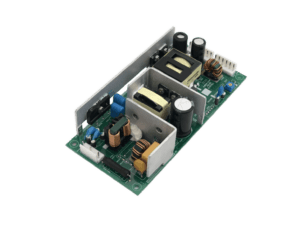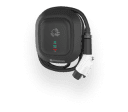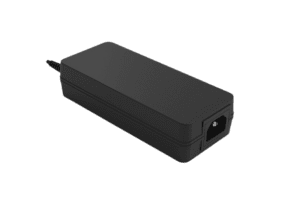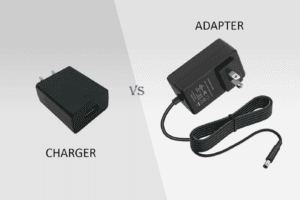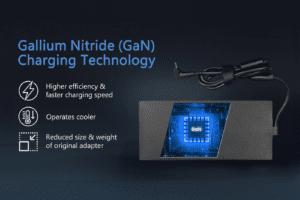BLOG
How to Build IP67-Rated Robot Charging Stations for Delivery, Security, and Service Bots in Harsh Environments
Table of contents

As autonomous robots continue to replace manual tasks across logistics, security, and service industries, the infrastructure supporting them must evolve to match their rugged performance. Nowhere is this more important than in the design of their charging systems. Whether it’s a sidewalk delivery bot facing rain, a campus security robot on night patrol, or an airport floor-cleaning robot scrubbing in wet conditions, a reliable, waterproof charging station is the lifeline that keeps it moving.
An IP67-rated robot charging station offers the ideal balance of durability, safety, and continuous uptime in unpredictable environments. IP67 certification ensures full dust protection and waterproof sealing for short-term immersion—an essential requirement in any deployment where weather, moisture, or debris could threaten performance.
In this guide, we break down how to build a robust IP67-compliant charging station from the ground up, focusing on best practices for deployment in delivery, security, and service robot applications.
Why IP67 Certification Is Essential for Harsh Environments
IP67-rated charging stations are critical for environments where exposure to dust, water, and impact is routine. Without proper protection, a charging dock becomes a single point of failure.
Top Features
- Sealed enclosures with waterproof gaskets and IP-rated connectors
- Electronics protected by conformal coating and internal thermal barriers
- Pressure-equalization vents to prevent condensation
- Reinforced housing to withstand outdoor and industrial conditions
Top Benefits
- Prevents downtime caused by water ingress or dust accumulation
- Ensures safe operation in rain, snow, or cleaning environments
- Protects sensitive electronics from thermal shock and corrosion
- Meets regulatory safety standards for public and commercial use
Best Practices
- Validate IP67 certification through third-party testing
- Select enclosures rated for both ingress protection and impact resistance
- Use potting or conformal coating on circuit boards to guard against humidity
- Design ventilation systems that equalize pressure without moisture entry
IP67 isn’t just a badge—it’s a performance guarantee in mission-critical environments.
Designing for Delivery Robots in Urban and Outdoor Settings
Delivery robots are increasingly navigating city sidewalks, university campuses, and residential complexes. Their charging stations must be tamper-proof, weather-resistant, and autonomous-friendly.
Top Features
- Ground-level docks with retractable or auto-latching charge ports
- LED indicators and networked status dashboards
- Overcurrent and overvoltage protection built into charge delivery
- UV-resistant enclosures for extended sunlight exposure
Top Benefits
- Enables round-the-clock operation without human intervention
- Prevents vandalism or misuse in high-traffic areas
- Reduces maintenance costs through long-term durability
- Supports fast deployment across urban delivery grids
Best Practices
- Install docks in shaded or semi-covered zones when possible
- Use brightly lit indicators for nighttime navigation and status alerts
- Implement lock-in mechanisms that secure the robot during charging
- Design for ADA compliance and pedestrian safety in shared spaces
Delivery robots operate at scale—and their charging systems need to do the same.
Engineering IP67 Charging for Security Robots on Patrol
Security robots often operate across vast outdoor spaces—parking lots, warehouses, campuses—where charging infrastructure must survive rain, wind, and temperature swings.
Top Features
- High-wattage AC-DC charging modules for rapid charge cycles
- Shielded communication ports for secure data exchange
- Tamper-resistant design with internal locking screws and hidden ports
- Surveillance-integrated housing that doubles as a monitoring station
Top Benefits
- Keeps security robots patrolling without downtime
- Adds charging intelligence to fleet tracking and deployment logic
- Reduces on-site staffing needs by ensuring autonomous uptime
- Enhances operational safety with layered power and data protection
Best Practices
- Include surge protection for lightning-prone areas
- Use wall-mounted or elevated docks to prevent flooding exposure
- Add solar backup where grid access is unstable
- Integrate with access control or smart building systems
Charging is a security function—if it fails, your entire system is compromised.
CLIENT'S QUOTE
"Phihong’s PoE solutions have made a huge difference for us! Our network runs more efficiently, and we’ve seen real cost savings. We couldn’t be happier!"
Supporting Service Robots in Indoor-Outdoor Hybrid Zones
Service bots like floor scrubbers and facility greeters often work in hybrid environments—airports, malls, warehouses—where moisture, traffic, and exposure vary by zone.
Top Features
- Auto-aligning charge contacts with spring-loaded pins
- Dual-mode enclosures for dry and wet environment use
- Proximity sensors to initiate safe docking in crowded zones
- Multi-bay configurations for fleet deployments
Top Benefits
- Ensures safe and efficient charging in mixed-use environments
- Reduces risk of electrical hazards in wet-cleaned floors
- Allows seamless integration into routine cleaning schedules
- Supports high-throughput operations without manual intervention
Best Practices
- Use IP67-rated connectors even for indoor zones due to splash risk
- Position docks near janitorial or storage areas for easy maintenance
- Schedule charging during off-peak foot traffic hours
- Implement smart dock scheduling via cloud or edge systems
Service robots deserve industrial-grade support—even in polished settings.
Power and Communication Integration in IP67 Charging Systems
The heart of every dock is its power module and communication system. These must function flawlessly under tough conditions.
Top Features
- Wide-input voltage power supplies with PFC and EMI shielding
- Real-time monitoring of temperature, current, and voltage
- CANBus, RS-485, or Ethernet support for fleet-wide visibility
- Built-in diagnostics and remote firmware update support
Top Benefits
- Ensures optimal charging without overloading or overheating
- Supports predictive maintenance and uptime tracking
- Enables secure, encrypted communication with robot BMS
- Allows field upgrades without physical intervention
Best Practices
- Test communication integrity under high-humidity and low-temperature conditions
- Ensure firmware failsafe protocols are in place for critical faults
- Use protected cables and IP67-rated ports for data transfer
- Include watchdog circuits to reboot charging logic during system failure
Data and power flow go hand-in-hand. Treat both as critical infrastructure.
Thermal and Mechanical Considerations for Outdoor Charging
Outdoor operation introduces challenges in heat dissipation, condensation, and material expansion. These must be factored into design from day one.
Top Features
- Passive heat sinks and thermally conductive enclosures
- Internal heaters for sub-zero climates
- Pressure-relief valves to prevent vacuum seal warping
- Modular construction for scalable deployment and easy maintenance
Top Benefits
- Prevents power failures during hot or freezing weather
- Extends hardware lifespan with stable thermal management
- Reduces service calls with low-maintenance mechanical design
- Allows integration into rugged environments without costly upgrades
Best Practices
- Run thermal simulations across -20 °C to +50 °C before deployment
- Avoid plastic housings in high-temperature applications
- Use anti-condensation coatings on interior surfaces
- Design enclosures with replaceable panels or access doors
Smart thermal engineering ensures charging doesn’t become a seasonal liability.
How Phihong USA Helps OEMs Build IP67 Robot Charging Stations
Phihong USA specializes in rugged, reliable power and charging systems tailored for robotics OEMs. From waterproof AC-DC modules to wide-temp BMS-compatible chargers, we support design teams building outdoor and industrial-grade docking infrastructure.
Our engineering services include UL/IP compliance support, BOM validation, thermal simulation, and custom integration for delivery, security, and service robot fleets. Whether you’re building a network of sidewalk delivery docks or a fleet-ready charging hub for airport scrubbers, we help you go from prototype to production with speed and confidence.
Looking to scale your robot operations in the real world? Partner with Phihong USA and power the future of autonomy—rain or shine.

Contact Our Team Today!
Our dedicated sales team and international partners are prepared to support you with your latest projects and initiatives globally.
Explore More with Phihong USA
As we conclude our exploration of PoE technology, it’s evident how these innovations are streamlining power and data integration across various industries. Phihong USA stands at the forefront of this technological advancement, offering a diverse range of power solutions designed to meet the evolving needs of modern industries.
Phihong USA’s extensive product lineup includes:
- Power over Ethernet (PoE) Solutions: Delivering reliable power and data transmission over a single cable, ideal for simplifying network installations and reducing costs.
- AC/DC Adapters and Power Supplies: From compact adapters to industrial-grade power supplies, Phihong provides solutions that ensure efficiency and reliability in various applications.
- Battery Chargers: Customizable chargers for lithium-ion and lead-acid batteries, supporting a wide range of power requirements for mobility and industrial applications.
- Medical Power Supplies: Specialized power solutions designed to meet the stringent requirements of the healthcare industry, ensuring safety and reliability.
Phihong USA is committed to innovation and excellence, continually developing products that meet the highest standards of performance and reliability. Their global reach and dedication to customer support make them a trusted partner in powering the future.
Here are some useful links to explore Phihong USA’s offerings further and bring in new potential clients:
Visit Phihong USA to discover how their advanced power solutions can support your business needs. Whether you’re looking to upgrade your network, or find reliable power supplies, Phihong USA has you covered.
By choosing Phihong USA, you’re partnering with a leader in power technology, ensuring your operations run smoothly and efficiently with top-tier power solutions. Contact Us today!
FAQ
What makes a robot charging station IP67-rated?
IP67-rated robot charging stations are sealed against both dust (IP6x) and water immersion up to 1 meter for 30 minutes (IPx7). This includes gaskets, waterproof connectors, and pressure-equalizing membranes to prevent moisture ingress. Internally, conformal-coated electronics, corrosion-resistant materials, and sealed cables ensure long-term protection. The certification requires lab testing according to IEC 60529, and manufacturers should provide proof of compliance. For robots operating outdoors or in wet, dusty, or industrial zones, IP67-rated docks ensure uninterrupted performance and long system life.
Do delivery and service robots really need waterproof charging stations?
Yes—especially if they’re operating outdoors, near entrances, or in high-humidity indoor zones. Even robots used in covered areas may encounter sprinklers, rain splashes, snow melt, or wet floors. If the dock isn’t sealed, moisture can short-circuit electronics, damage connectors, or pose safety hazards. IP67 certification ensures that the charging station is safe and operable under these conditions. For delivery, security, and cleaning applications, waterproofing isn’t optional—it’s critical to uptime, public safety, and long-term ROI.
What are common design mistakes in outdoor robot charging docks?
Common errors include using low-grade plastics that crack under UV exposure, failing to seal entry points (like cable ports), omitting pressure-relief vents (causing condensation), and installing non-rated connectors that corrode. Other oversights include insufficient drainage, lack of surge protection, and using enclosures that warp under temperature cycles. Finally, designers often forget that a robot’s charging system is only as reliable as its weakest link—so IP67 must apply to the entire system, not just the shell. Avoid these pitfalls by using certified parts and testing the full system.
How do IP67 stations handle thermal management in extreme weather?
IP67 stations can include passive and active thermal controls—from built-in fans and heaters to thermally conductive materials and insulation layers. In freezing environments, internal heaters prevent battery and board failure. In hot climates, heat sinks and vented enclosures dissipate energy safely. Pressure-equalization membranes allow for airflow without letting in water, and smart temperature sensors adjust charging behavior dynamically. Systems must be tested across -20 °C to +50 °C or higher, depending on deployment. Proper thermal engineering ensures year-round functionality.
Can Phihong help design custom IP67 charging stations?
Absolutely. Phihong USA works directly with robotics OEMs and integrators to develop custom IP67-rated charging solutions. We supply waterproof AC-DC modules, BMS-compatible chargers, wide-temperature components, and sealed connectors ready for harsh environments. Our team offers thermal testing, IP certification support, and production scaling assistance. Whether you’re building a modular dock for delivery bots or a multi-port station for service fleets, Phihong brings the power, protection, and performance needed for industrial-grade robot charging.

